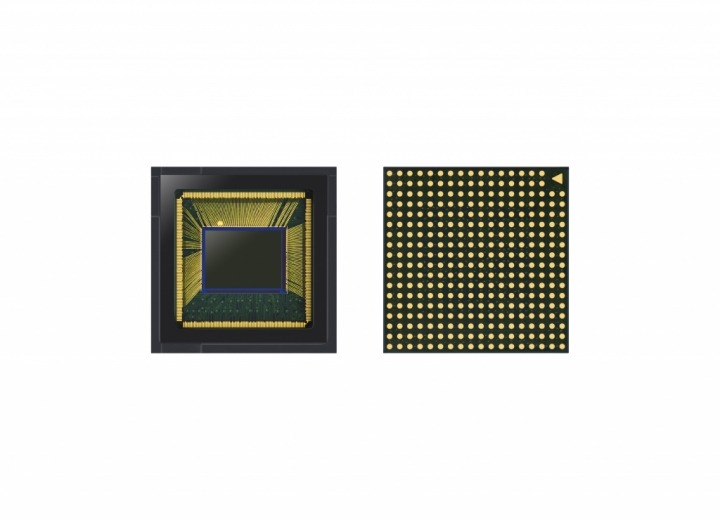From 0.1MP VGA Single sensors to High-Resolution Multiple Sensors. First, we saw Dual Cameras in Smartphones, then Triple cameras, Quad cameras, and Penta Cameras. The Quad Cameras are easily available even in budget smartphones. If I have to pick the two biggest Smartphone camera trends, I will pick Multiple Sensors and High-Resolution Sensors. Back in 2018, Two of the biggest Smartphone Camera sensor vendors Samsung and Sony unveiled their 48MP Camera sensors for smartphones. Those 48MP camera sensors were Samsung ISOCELL GM1 and Sony IMX586. Starting in late 2018 to the end of 2019 a number of budget, mid-range, and even budget flagships got launched with those 48MP High-Resolution Sensors. When we were thinking 48MP Sensors are just waste in smartphones, Samsung announced its ISOCELL Bright GW1 64MP Sensor for smartphones. Not just 64MP, the South Korean Giant also unveiled ISOCELL Bright HMX 108MP Sensors. Sony was not far going behind in this race, They also come up lately with SONY IMX686 64MP Sensor to compete with Samsung ISOCELL GW1. Because of its early availability, the first lot of 64MP Camera smartphones were using Samsung ISOCELL GW1 64MP Sensors. Those devices are Redmi Note 8 Pro, Realme XT, Realme X2, Realme X2 Pro, Realme X50 Pro, Realme 6, Realme 6 Pro, Galaxy M31, etc. The SONY IMX686 got its first appearance in Redmi K30. Now Redmi K30 is launched in India as Poco X2 and It also has the same SONY IMX 586 Sensor. Some more upcoming smartphones will also feature the SONY Sensor. The Pricing of Realme and Redmi smartphones that has Samsung 64MP Sensor are very similar to Poco X2 which has IMX 686. It becomes so confusing to make an understanding of both the sensors. If you want to know all about these two sensors this article is just for you. Here I will explain everything in detail so without any further delay Let’s get start it.
Samsung ISOCELL GW1 Vs SONY IMX686
Samsung ISOCELL GW1 and SONY IMX 686 both sensors have 64MP resolution. The 64MP basically means 9280×6944. The Sensor size also remains the same as 1/1.72 inches. You will find someone saying IMX686 has a bigger sensor than ISOCELL GW1 but I am telling you both sensors are of the same size. The Interface used in these sensors is also the same MIPI4 Lane RAW. Now coming to the actual functionality of both these sensors. The actual Pixel Size is 0.8-micron in both the sensors. The ISOCELL GW1 Sensor uses ISOCELL Plus Pixel Isolation tech for increasing light sensitivity and color fidelity. With Tetracel technology, It takes 16MP Images in low light and in Daylight, It uses the Remosaic algorithm to take high-resolution 64MP Photos. The Pixel size becomes 1.6-micron while taking images in Low Light scenarios. The 3D HDR tech helps in taking photos and videos in Mixed and challenging lighting. On the other hand, Sony IMX686 uses its own set of solutions for capturing photos in different conditions. It has a Quad Bayer color filter that combines 2×2 Pixels to form one large Pixel. It is basically called 4×1 Pixel Binning which you might have heard in Xiaomi presentations. With Pixel Binning tech Sony IMX686 also takes 16MP Shots in Low Light and 64MP Shots in Daylight. As said earlier, It also has a 0.8-micron pixel size which becomes 1.6-micron after pixel binning in low lighting. Both these sensors use different tech for taking 64MP Daylight photos or 16MP Low light photos. The frame is also the same at 21fps in both the sensors. Samsung ISOCELL GW1 has a real-time high dynamic range of up to 100dB. It also uses Super PD focusing tech for faster focus. SONY has not released a press release about IMX686 so we have very little knowledge about it but whatever I am able to understand both the sensors are pretty much the same. The end result of sensors depends on various other factors like Image Processing. Image Processing is handled by smartphone makers depending on the SoC. In some scenarios, SONY IMX686 will take better photographs and ISOCELL GW1 will also be on top in some cases. You should keep in mind that both are 64MP Sensors with the same 1/1.72 inch Sensor size and 0.8-micron pixel size while taking 64MP Shots and 1.6-micron pixel size while taking 16MP Shots in low-light. That’s it in this comparison guys. I hope it will be helpful for all of you.
Δ



